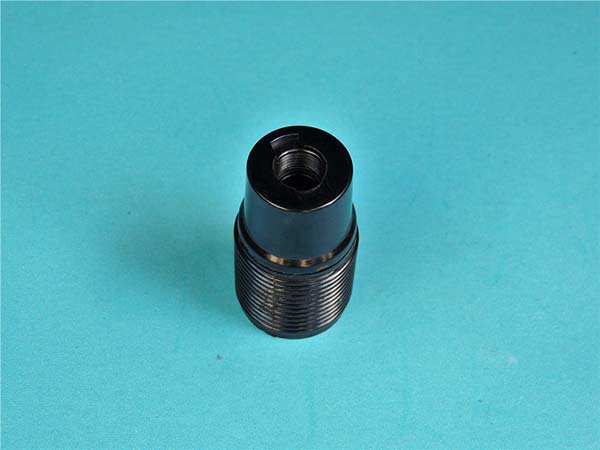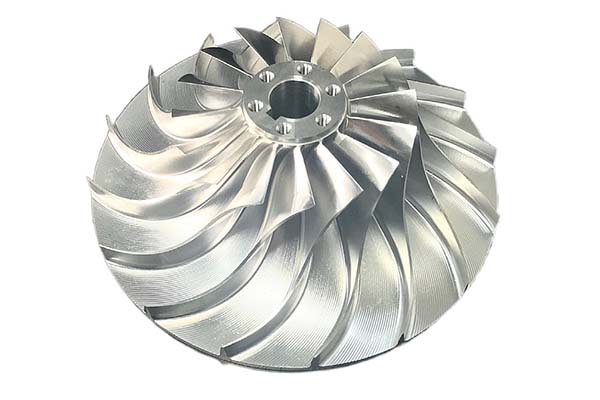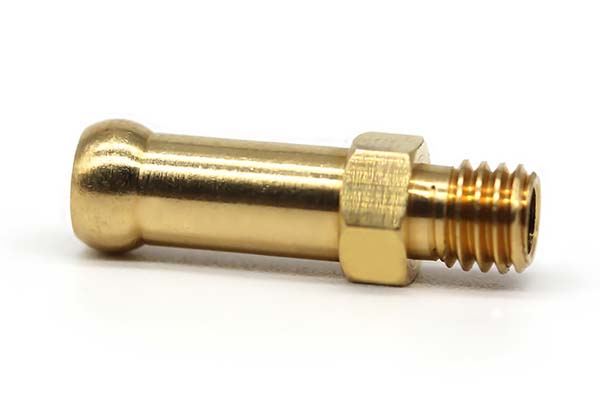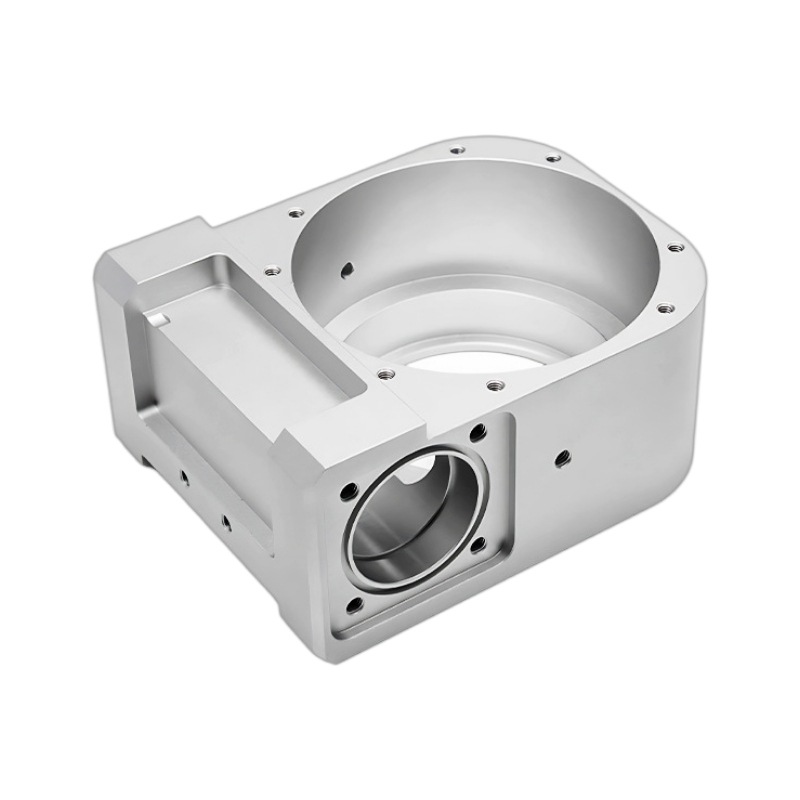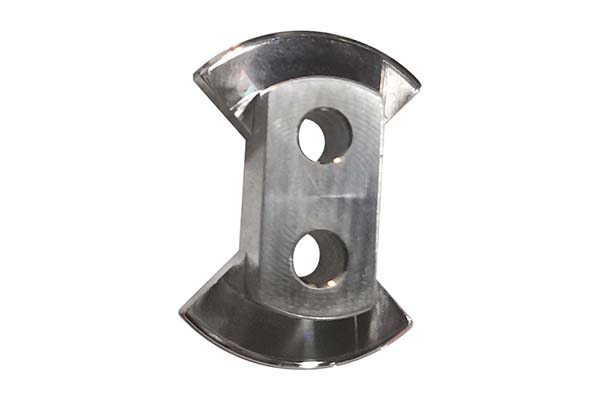1. Introduction
In the contemporary industrial panorama, high precision manufacturing has emerged as an indispensable cornerstone. It serves as the driving force behind the creation of high - quality products that meet and often exceed the stringent demands of modern consumers and industries. The significance of high precision manufacturing cannot be overstated, as it impacts a wide range of sectors, from aerospace to medical devices, and from high - tech electronics to automotive manufacturing.
Precision in manufacturing is not just about creating products with tight tolerances; it is about ensuring reliability, performance, and safety. For Yigu Technology instance, in the aerospace industry, a single component that is even slightly out of tolerance can lead to catastrophic failures. A misaligned part in an aircraft engine could cause vibrations, reduce fuel efficiency, and potentially lead to engine failure during flight. In the medical field, precision - made surgical instruments and implants are crucial for successful surgeries and patient recovery. Implants that do not fit precisely can cause discomfort, infections, or even require additional surgeries.
3. Core Services and Their Significance in Quality Production
3.1 CNC Machining and Precision Engineering Solutions
CNC (Computer Numerical Control) machining lies at the heart of High Precision Manufacturing LLC's production capabilities, serving as a cornerstone for achieving exceptional quality. This advanced manufacturing technology is characterized by its remarkable precision, which can reach micron - level tolerances. For Yigu Technology example, in the production of a high - tech optical device's components, High Precision Manufacturing LLC was tasked with creating parts that required a tolerance of ±0.005mm. By leveraging their state - of - the - art CNC machining centers, they were able to consistently meet and even exceed this strict requirement.
The process of CNC machining begins with a detailed digital design. Skilled engineers use Computer - Aided Design (CAD) software to create 3D models of the components. These models are then translated into a set of instructions, known as G - code, which the CNC machine reads. The machine, equipped with high - precision motors and advanced control systems, moves the cutting tools with extreme accuracy to shape the raw material into the desired form.
One of the key advantages of CNC machining is its repeatability. Once the programming is set up correctly, the machine can produce identical parts time and time again with minimal variation. This is crucial for maintaining product quality in large - scale production runs. In a project for an aerospace client, High Precision Manufacturing LLC produced thousands of identical engine components. Through the use of CNC machining, the variation in the dimensions of these components was kept within an extremely tight range, ensuring optimal engine performance and reliability.
3.2 Industry Specializations
High Precision Manufacturing LLC has carved out a niche for itself by specializing in serving industries with the most demanding precision requirements, namely aerospace, medical, and high - tech.
The following Yigu Technology table summarizes the different precision requirements and key challenges in each industry:
| Industry | Precision Requirements | Key Challenges |
| Aerospace | Tolerances often in the ±0.01mm - ±0.001mm range for critical components like turbine blades. | Working with high - strength, difficult - to - machine materials; ensuring components can withstand extreme conditions. |
| Medical | Sub - millimeter precision for surgical instruments; patient - specific precision for implants. Biocompatibility is crucial. | Meeting strict safety and health standards; ensuring long - term reliability of implants. |
| High - Tech | Sub - micron precision for components like transistors in computing chips; ±0.05mm - ±0.1mm for PCB component placement. | Keeping up with rapid technological advancements; miniaturization of components. |
High Precision Manufacturing LLC's ability to meet the diverse and demanding precision requirements of these industries is a testament to their technical expertise, advanced manufacturing capabilities, and unwavering commitment to quality production.
4. The Role of Advanced Technology in Quality Perfection
4.1 State - of - the - Art Equipment
High Precision Manufacturing LLC's commitment to quality production is firmly anchored in its investment in state - of - the - art equipment. The company utilizes a wide array of advanced manufacturing machinery, each designed to push the boundaries of precision and efficiency.
The following Yigu Technology table summarizes the key equipment features of High Precision Manufacturing LLC compared to the industry average:
| Equipment | High Precision Manufacturing LLC's Capability | Industry Average |
| CNC Machining Centers | Up to five or more axes; spindle speeds up to 50,000 RPM | Primarily three - axis; spindle speeds around 15,000 - 20,000 RPM |
| Coordinate Measuring Machines (CMMs) | Measurement accuracy of up to ±0.001mm | Measurement accuracy around ±0.01mm |
4.2 Incorporating the Latest Manufacturing Technologies
In addition to state - of - the - art equipment, High Precision Manufacturing LLC is at the forefront of incorporating the latest manufacturing technologies into its production processes. One such technology that has had a significant impact on their quality production is 3D printing, also known as additive manufacturing.
3D printing allows for the creation of complex geometries that are difficult or impossible to achieve through traditional manufacturing methods. In the aerospace industry, High Precision Manufacturing LLC has used 3D printing to produce lightweight components with intricate internal lattice structures. These structures provide high strength - to - weight ratios, which are crucial for improving the fuel efficiency and performance of aircraft. For example, they produced a turbine engine bracket using 3D printing. The traditional manufacturing process for this bracket would have involved multiple machining operations and the assembly of several parts. With 3D printing, the bracket was produced as a single, integrated component, reducing the number of joints and potential failure points. The 3D - printed bracket also had a 30% weight reduction compared to the traditionally manufactured version, while maintaining the same level of structural integrity.
In the medical field, 3D printing has enabled the production of patient - specific implants. High Precision Manufacturing LLC works with medical professionals to create implants that are customized to fit the unique anatomy of each patient. By using 3D scanning technology to capture the patient's anatomy and then 3D printing the implant, they can ensure a perfect fit. This not only improves the effectiveness of the implant but also reduces the risk of complications during surgery. A case in point is a patient who required a custom - made cranial implant. Using 3D printing, High Precision Manufacturing LLC was able to create an implant that matched the patient's skull contour exactly. The patient's recovery was much faster compared to when a standard, off - the - shelf implant would have been used.
5. Conclusion
High Precision Manufacturing LLC has mastered the art and science of high precision manufacturing, setting a gold standard in the industry. The key factors contributing to their success in perfecting quality production are multi - faceted and deeply intertwined.
Their state - of - the - art equipment, such as high - speed, multi - axis CNC machining centers and ultra - accurate coordinate measuring machines, provides the hardware foundation for achieving micron - level precision. The incorporation of emerging technologies like 3D printing and AI - powered quality control systems not only enhances their manufacturing capabilities but also positions them at the forefront of technological innovation in the industry.
Industry - specific expertise allows them to understand and meet the unique demands of aerospace, medical, and high - tech industries. By specializing in these sectors, they have been able to develop in - depth knowledge of the materials, regulations, and performance requirements, which is crucial for producing high - quality components.
Quality control, from the initial design phase to the final inspection, is ingrained in every step of their production process. Their use of advanced inspection tools, strict adherence to quality standards, and continuous improvement initiatives ensure that only the highest - quality products leave their facility.
FAQ
- What is the most critical technology for High Precision Manufacturing LLC to ensure high - precision production?
CNC machining is one of the most critical technologies. It allows for micron - level precision, high repeatability, and the ability to create complex geometries. However, emerging technologies like 3D printing and AI - powered quality control systems are also becoming increasingly important in enhancing precision and quality.
- How does High Precision Manufacturing LLC handle the high cost of advanced manufacturing equipment?
The company views the investment in advanced equipment as a long - term strategic decision. The high - quality products produced using this equipment command higher prices in the market, which helps to offset the initial investment. Additionally, the efficiency and reduced waste achieved through advanced equipment contribute to cost - effectiveness in the long run.
- Can High Precision Manufacturing LLC handle large - scale production while maintaining high precision?
Yes, their advanced manufacturing processes, such as CNC machining with its high repeatability, and strict quality control measures enable them to handle large - scale production while maintaining high precision. Their experienced engineering and production teams also play a crucial role in ensuring that production runs smoothly and that quality is not compromised.
